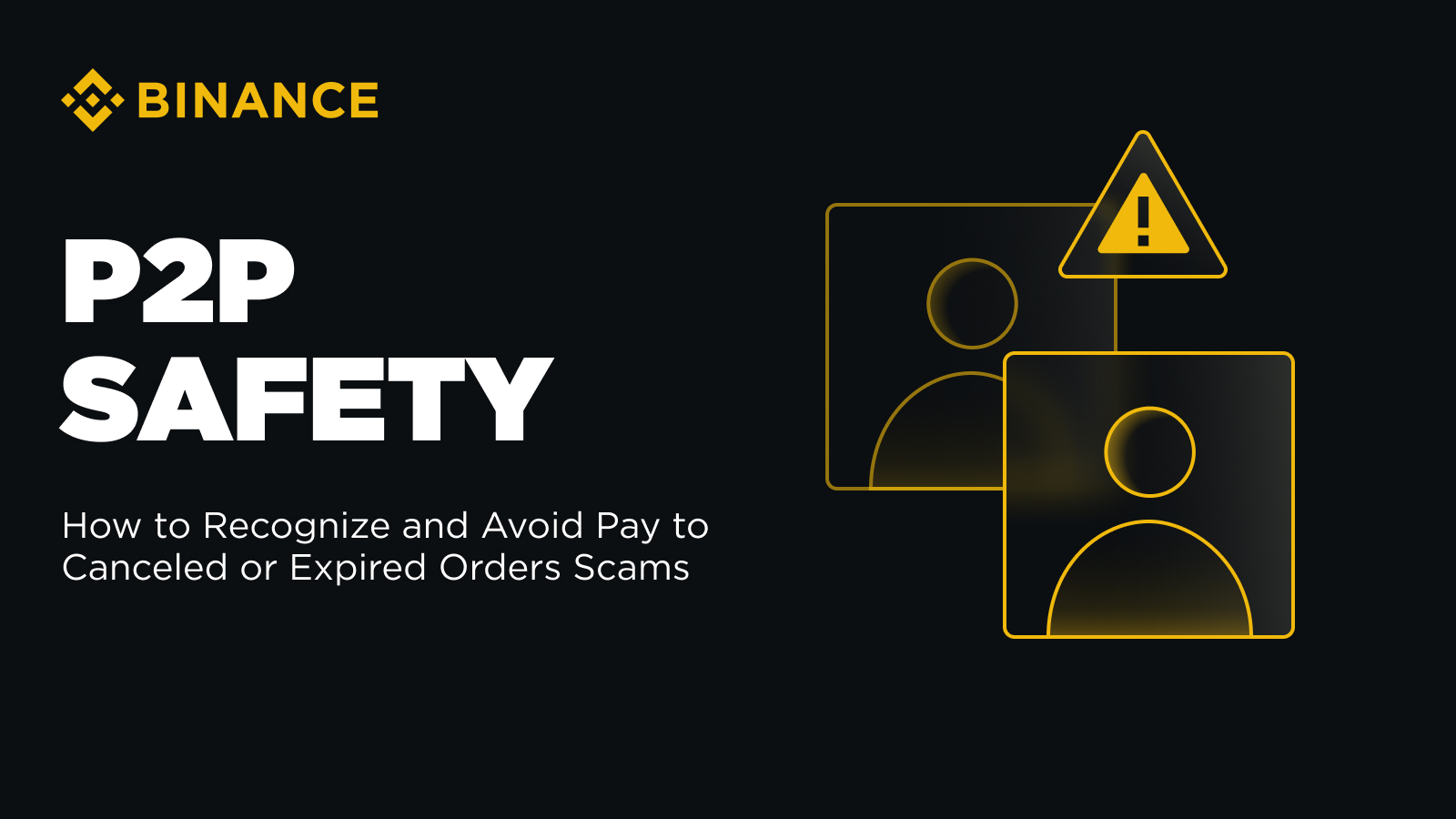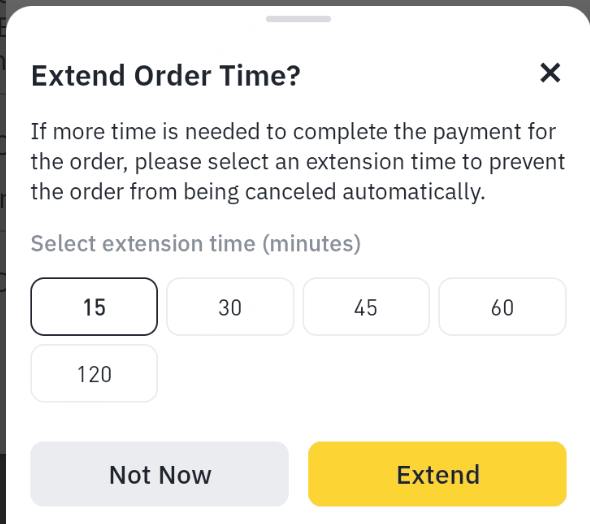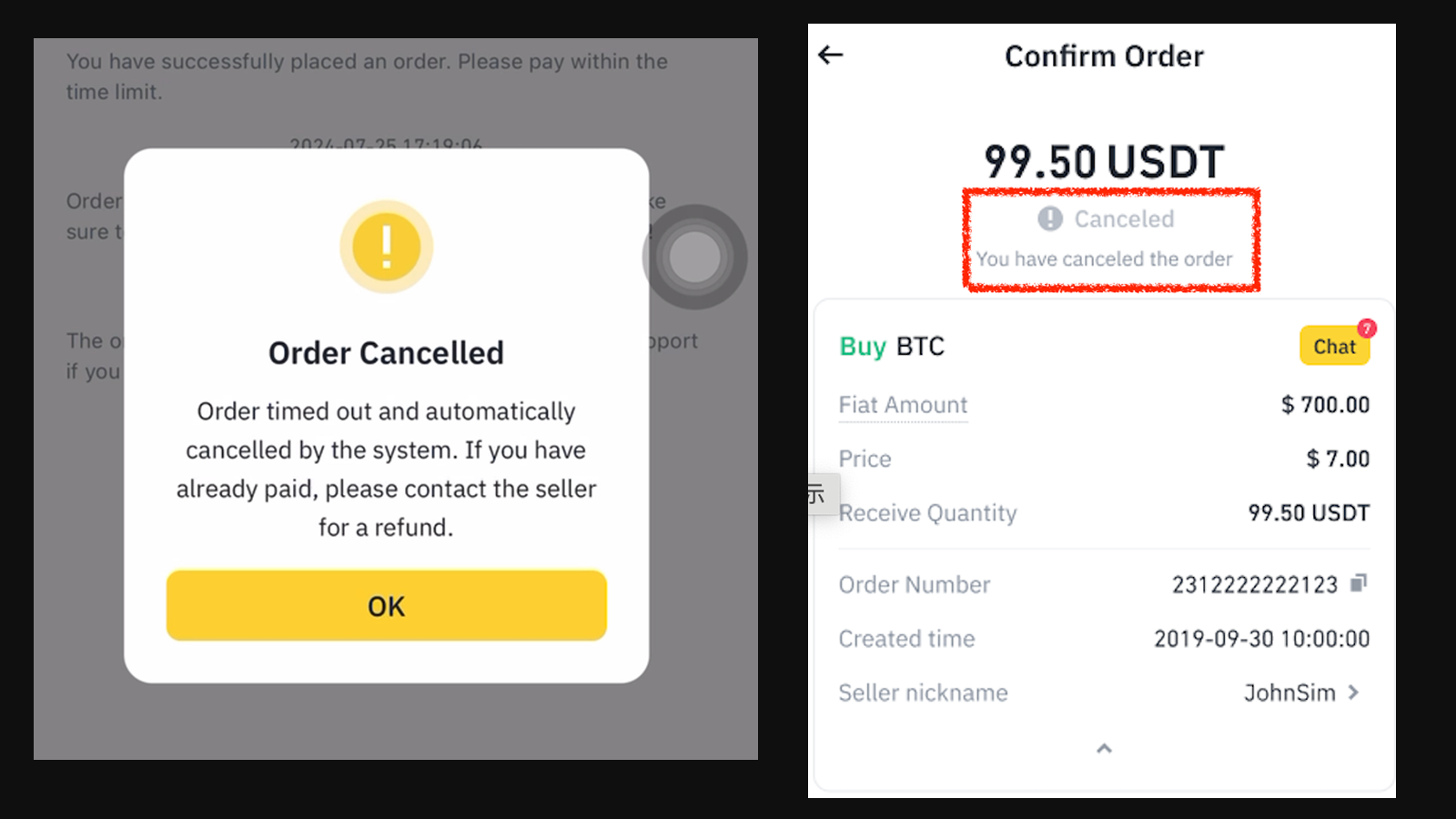Main Takeaways
The pay-to-canceled/expired-order scam tricks buyers into sending funds after a trade has expired or been canceled by using urgency, false reassurances, and forged screenshots.
Never send funds after an order is canceled or expired, and always keep communication on Binance.
If you've been scammed, act fast: document everything and contact Binance Support immediately.
Scammers love urgency – and in P2P trades, the clock is their weapon. By stalling during the order window and pressuring you to pay just as the trade expires, they create the illusion that the deal is still active – even when it’s no longer the case. Some even go as far as forging screenshots or claiming they’ve extended the time, all to trick you into sending funds to them. In this blog, we’ll break down exactly how the pay-to-canceled/expired-order scam works, walk you through a real-life example, and share practical tips to protect yourself.
Understanding the Pay-to-Canceled-Order P2P Scam
The pay-to-canceled/expired-order scam is a deceptive tactic used by fraudulent peer-to-peer (P2P) crypto sellers to trick buyers into sending payments after the trade order has been canceled or expired.
On Binance P2P, a typical transaction involves seller funds being held in escrow once a trade is initiated. Sellers will set a time limit for how long they’re willing to wait for the buyer to complete the payment. If the buyer doesn’t pay in time, the order is canceled and the crypto is returned to the seller – and that’s exactly where scammers exploit the system. Here’s how the scam typically plays out:
1. Posting an Attractive Offer: The scammer poses as a seller and lists a cryptocurrency offer on a P2P marketplace at a very appealing rate to lure buyers.
2. Buying Time: Once a buyer initiates the trade, the scammer tries to waste time during the order window. They will usually list incorrect payment details on purpose, making it difficult or impossible for the buyer to complete the payment in time. To buy more time, they may also ask the buyer to contact them on a third-party platform, or even request unnecessary information such as front and back images of ID documents.
3. Pushing for Payment After Order Expiry or Cancelation: As the order nears expiration or after it has already expired or been canceled, the scammer shares the correct payment details. They pressure the buyer to go ahead with the payment, using misleading phrases like “I’ve reserved the order for you” or “I’ll re-activate it once payment is made.”
These tactics are meant to create urgency and give the impression that the transaction is still valid, even though it’s not. Some scammers may even go a step further by sending fake screenshots of the order page, falsely showing that the payment time limit has been extended – when in fact, no such extension was made.
4. Buyer Sends Payment to an Invalid Order: Believing the seller, the buyer makes the payment despite the order being canceled or expired. Since the platform no longer recognizes the transaction, the buyer doesn’t receive any crypto.
5. Stalling to Escape: To buy even more time, the scammer may pretend to be cooperative by initiating a chat with customer support or opening an appeal. This stalling tactic gives them just enough time to quickly withdraw the funds before the platform can freeze their account or begin an investigation.
Real-Life Example of P2P Scam
A scammer poses as a seller on a P2P platform, listing crypto at an unusually attractive rate – often more than 5% lower than the floor price – to lure in unsuspecting buyers.
Once the trade is initiated, they deliberately stall by sending confusing and ambiguous messages – such as the 📞 emoji.
As the order nears expiration or gets canceled, the scammer suddenly becomes enthusiastic, claiming they can extend the order time.
Right after the order expires or is canceled, they continuously urge the buyer to make payment, offering constant reassurance that the crypto will be released once proof of payment is sent.
In some cases, the scammer may go further, asking for additional funds under the pretense that extra payment is needed to “reactivate” the order.
How to Protect Yourself From P2P Crypto Scams
Remember, scammers rely on convincing you to pay for a canceled or expired order. Never make any payment if the P2P order has been canceled or expired, as canceled orders cannot be reactivated.
1. Don’t Pay for Canceled or Expired Orders: Never send payment if the P2P order is no longer active. Once canceled or expired, the order cannot be reactivated.
2. Stay Vigilant: Be cautious of seller claims, especially if offers seem too good to be true. If you suspect anything suspicious, report it promptly to our support team.
3. Always Keep Conversations on Binance: Always communicate within the Binance platform for P2P transactions to ensure security. Do not share your personal contact details with any counterparties.
If you have made a payment and notified the seller, but the seller does not release the crypto after confirming payment, please file an appeal. Our support team is here to help resolve the issue for you.
If You’ve Been Scammed
1. Contact Support: Reach out to our customer support team to report the issue.
2. Document Everything: Keep records of all communications and transactions related to the incident.
3. Report: Immediately file a report by following the steps outlined in this guide: How to Report Scams on Binance Support.
Final Thoughts
Scams like the pay-to-canceled-order trick are designed to prey on quick decisions and a false sense of urgency. By abusing timeouts and banking on confusion, bad actors try to exploit even basic features of the P2P process. While Binance has safeguards such as escrow and reporting systems, no system is foolproof. Safety is a shared responsibility – staying alert, double-checking order status, and only transferring funds when appropriate are crucial.
Further Reading
Know Your Scam Series
What is Peer-to-Peer (P2P) Cryptocurrency Trading and How to do it Safely?
How to Trade With Binance P2P: A Comprehensive Guide








